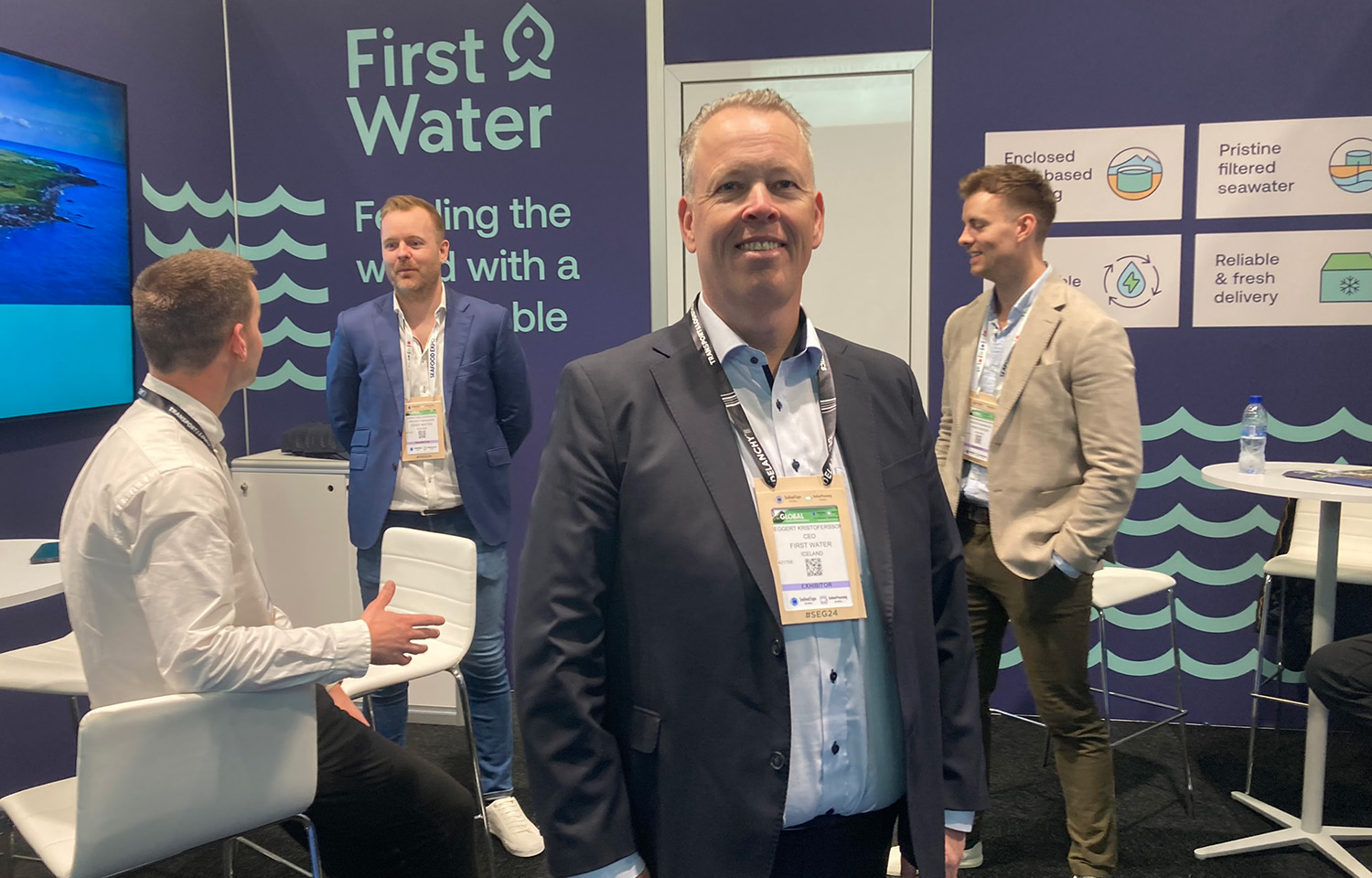First Water produced around 700 metric tons (MT) of Atlantic salmon at its flowthrough land-based farm in Thorlakshofn, Iceland, in 2023, and that total will more than double in 2024.
The company, founded as Landeldi in 2017, completed its first harvest of 50,000 Atlantic salmon weighing an average of 3 kilograms in June 2023. It is on target to harvest 1,500 MT of 5-kilo salmon in 2024, according to CEO Eggert Kristofersson.
“We are getting there, slowly,” Kristofersson told SeafoodSource at the 2024 Seafood Expo Global in Barcelona, Spain.
First Water has raised EUR 123 million (USD 133.7 million) – enough to complete the second of six phases, which will eventually grow its annual production capacity to 50,000 MT. It is now tapping into that funding to build a new processing plant and a second hatchery, Kristofersson said.
“Even though interest rates are high, we successfully completed our fundraiser in 2023,” Kristofersson said. “It was tough, but I think investors see the possibility of what we can do with salmon farming in Iceland.”
As its name suggests, First Water touts its water quality as its differentiator.
“We are doing things differently, as we source our seawater by drilling through lava, so we're getting purified seawater via natural filtration,” Kristofersson said. “It also gives us a very stable water temperature of 7 to 9 degrees [Celsius] all year round. We have also had fish for two years in our [farm], and we have no diseases and no sea lice, so we don't use any chemicals or medicine.”
First Water has other advantages, such as its reliance on geothermal and hydroelectric power and its close proximity to a harbor visited by a shipping company making thrice-weekly trips to Europe and an airport able to deliver its salmon to the U.S. Because of that, First Water is targeting a 50-50 split between its E.U. and U.S. sales.
“A lot of Icelandic sea farms go 80-20, and that is up recently from just 5 percent going to the U.S.,” Kristofersson said. “We want to do more than that in the U.S. market because the U.S. market is growing well.”
Two other land-based salmon-farming projects are now operating nearby to First Water – Thor Landeldi and Laxey – and Kristofersson speculated they chose their sites so they could also access the volcanic-filtered water quality. Land-based projects in Iceland are getting funded because they’re presenting a compelling case to investors on both financial and environmental grounds, Kristofersson said.
“Investors are looking for opportunities to invest into the salmon-export business, which is a global market accounting for 3 million MT of salmon every year,” he said. “Our capex is EUR 16.50 [USD 17.93] per kilo, but the opex is lower than the sea-based sector because the mortality we’re looking at is below 5 percent. They are also seeing the positive environmental framework. We are using green energy, and we are cleaning the seawater before it goes out; our projects are checking all the ESG boxes.”
Each of the projects carries with it a national economic significance, which has provided a moral imperative to ...








